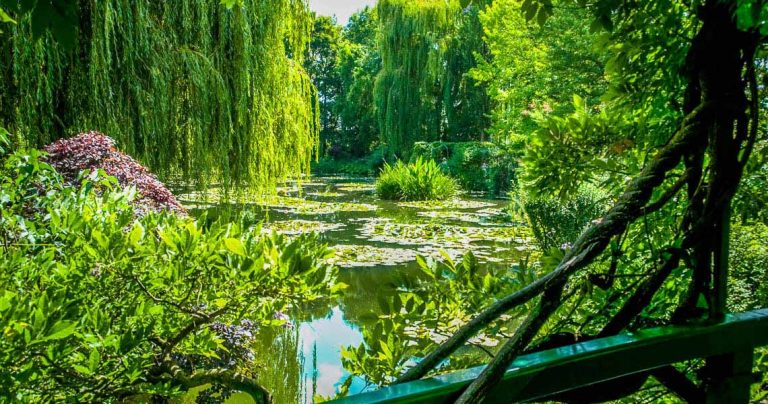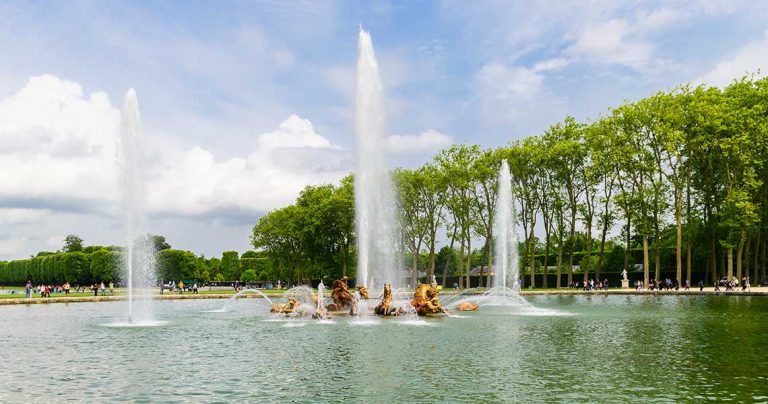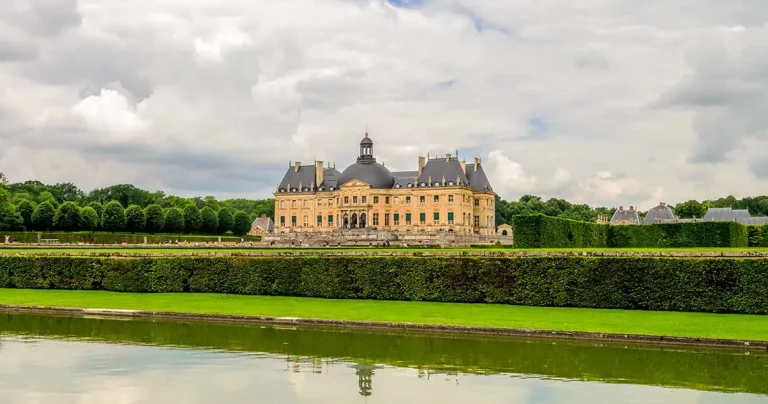Château d’Ussé – The Sleeping Beauty Castle
Sleeping Beauty
Château d’Ussé, also referred to as the Castle of Sleeping Beauty and the Castle of Dreams, owes its popularity to two alleged historical events. Firstly, legend has it that Charles Perrault, while staying at Ussé as a guest of the Count of Saumur, was inspired to portray the Château as the castle in his 17th-century tale of Sleeping Beauty. Secondly, it is believed that Walt Disney selected Ussé as one of his models for Cinderella Castle (1971). Having those sorts of rumours hovering over your châtewouldn’twouldn’t exploit them for all their worth?
The Spell of Maleficent
The Château attic has been set up with various rooms depicting scenes from the Sleeping Beauty fairy tale. Access to the fairy tale is via a narrow, spiral staircase in a corner tower, through a dusty claustrophobic attic and out onto a rampart. Visitors can walk along the rampart and look through windows, some open and some enclosed, at the different views of mannequins dressed in period costumes depicting the various scenes in the story. The exit is via another narrow, spiral staircase.
I am sure that most visitors will cover this section of the Château without considering how enclosed it is. But for a claustrophobic like me, the narrow spiral staircase aattic’sgloomy attic’s confined space take on a diffeMaleficent’s. Maleficent’s curse landed on me, but, unfdidn’ttely, I didn’t get to sleep through it. I was fully awake and beginning to panic. Have you ever tried to reverse your way back down a crowded spiral staircase while experiencing a panic attack?
This may seem strange coming from a psychologist who has spent most of his career treating phobics of all descriptions. Ironically, my original sensitising event occurred in French territory, Noumea, when I was locked in a small windowless toilet. I should have realised what was going to happen when I first started climbing the stairs.
Panic attacks are not pleasant, particularly when your wife, a psychiatric nurse would you believe, keeps laughing at your predicament. Forward was the only way out, and I am still here to tell the story.

Current Owner
However, Ussé is not Disneyland. Unlike many of the famous Loire châteaux, Ussé is not a commercial enterprise. Nor does it aspire to be one. It has neither Royal history nor National Monument status. It is still private property and has been home to the same family since the early 19th century.
The current owner, Count Blacas, opened the Château to the public in 1975 out of necessity. The Count is passionate about maintaining the Château as close as possible to its original design. Traditional methods are not cheap, but the Château is entirely self-funded with no government subsidy. The Count can often be seen working around the Château with the help of only a few employees.
Short History
Compared to other Loire châteaux, Ussé has a very tranquil history. Scandal, conspiracy, intrigue, and Royal confiscation seem to have bypassed Ussé. It even managed to avoid destruction during the French Revolution.
The first known owner was a Viking, Gelduin I, who erected a wooden fortress around 1004. In the 15th century, Jean V of Bueil (ChaVII’sVII’s captain) built a fortified castle on the foundations of this early fortress, which makes up part of the present building.
In the 15th and 16th centuries, various owners added their personal touches. The Chapel, to the east of the Château, marks the passage from Gothic to Renaissance architecture. Constructed between 1523 to 1535 by Chad’Espinaypinay and his wife, Lucrèce de Pons, the outside and inside are very Gothic. However, much of the ornamentation, some of which displaysinitials’ia’s’ C”a’d ‘L’ (after the owners), marks the Renaissance trend.

In the 17th century, Ussé became the stately home you see today, with its majestic view of the Indre river and Loire Valley. Marquis Bernan de Valentinay bought the land in 1659. With France enjoying a relatively peaceful period,Château’seau’s enclosed quadrangle was considered an unnecessary defensive requirement. To open out the Château onto the valley, the Marquis de Valentinay had the north wing eliminated.

In 1664, the Marquis de Valentinay commissioned André Le Notre, the architect of the Versailles Gardens, to develop the terraced garden that we see today. The ornate design is typical oNotre’stre’s passion for form and symmetry. It is richly planted with colourful flowers and orange trees in tubs, some of which dates to 1789.

The Château later belonged to the Duke of Montbazon, Monsieur de Challabre, the Duchess de Duras and the Countess de la Rochejacquelin, who passed it onto her nephew, Count de Blacas, whose descendants still own Ussé.
Nearby the Chapel are two magnificent cedars of Lebanon, a gift from the author, Chateaubriand, to the Duchess of Duras. The Duchess, herself a writer, had met Chateaubriand while in exile in London during the French Revolution in 1789. On her return to France, she maintained a literary salon in Paris and continued her relationship (some say as mistress) with Chateaubriand. He visited her every morning, but when he took another mistress, the Duchess is said to have stopped all the clocks in the house to never expect his visit.
What is a romantic castle without a love affair?

Inside the Château
The many rooms and halls of Ussé contain magnificent period antiques and furnishings installed by the different owners.
Central Gallery
The Central Gallery displays the Château’s exquChâteau’slection of Flemish tapestries (Brussels), woven in the 18th century from drawings by David Teniers (17th-century painter).

The Guard Room
The optical illusion created by the ceiling in the Guard Room dates back to the 17th century. The collection of weaponry and oriental objects were brought back in the 19th century from a world trip made by Count Stanislas de Blacas.

Vauban’s Lounge Room
The Vauban’s loungVauban’sas originally the Chapel at the time of the fortified castle. The walls are adorned with 16th-century Flemish tapestries (Brussels) and tell the story of David and Goliath. The 16th-century Italian cabinet, inlaid with mother-of-pearl, contains 49 hidden drawers.

The King’s Room
ChKing’sd’Ussé has thed’Usséred King’s room, jKing’s case a king happened to visit. The floor is the original 17th-century oak parquet. The silks on the wall, with their Chinese patterns, were woven in the 18th century in the factories of Tours.

NeKing’sll the rooms contain wax models in period costumes. This display is unique among Loire châteaux, and while changes are made to the costumes every year, I found them quite distracting. Because of their presence, most rooms are roped off, preventing a closer examination of the room’s contents.
The Location
Driving along the narrow streets of Rigny-Ussé, it is easy to miss the Château d’Ussé, set upd’Usséhill and behind a high stone wall. But, once you realise your error, you will instantly understand why it is known as the Castle of Fairy Tales.
Château d’Ussé is a 20 minute drive from Azay-le-Rideau along the D17/D7. This route approaches Ussé from the east and takes you through the small village of Rigny-Ussé. Alternatively, you can take the D57/D16 from Azay along the Loire and approach Ussé from the north, giving you a beautiful frontal view of the Château.
There is no train station, and Ussé can be difficult to reach without a car or bicycle. We visited in May, and there were very few tourists.
We took the east approach, but, unfortunately, roadworks in the village made the road unpassable. So, we parked at the Town Hall and walked the short distance through Rigny-Ussé to the Château. There is plenty of parking across the street from the Château.
Like most small villages during the lunch hour (or two), Rigny is as ‘dead as a doo’ nail’. Even the ro’d workers were nowhere to be seen, but their gaping hole in the middle of the road was still evident. We did manage to find a small shop and rouse the shopkeeper from her slumber to get a cool drink. A cafe and a couple of boutiques were open nearer to the Château.

Ussé is a much larger château than Azay-le-Rideau but without the same patronage. This is possibly due to its relative isolation, but that isolation contributes much to its charm. Standing in a leafy setting on the edge of the Chinon forest and looking down on the Loire Valley, it is not hard to see why Ussé portrays a fairy tale image.
However, there is much more to the Château d’Ussé than prd’Ussé by a fairy tale. Dig behind the mythology, and you will find rich stories in its owners, visitors, furnishings, tapestries, antiques and paintings.
Information
37420 Rigny-Ussé
+33 2 795 405
Open mid-Feb-Mar: 10 am to 6 pm; Apr–Sep: 10 am to 7 pm; October–mid-Nov: 10 am to 6 pm;
From Azay-le-Rideau: east on D17/D7 or north on D57/D16; From Paris: train to Tours then to Azay-le-Rideau;
www.chateaudusse.fr







